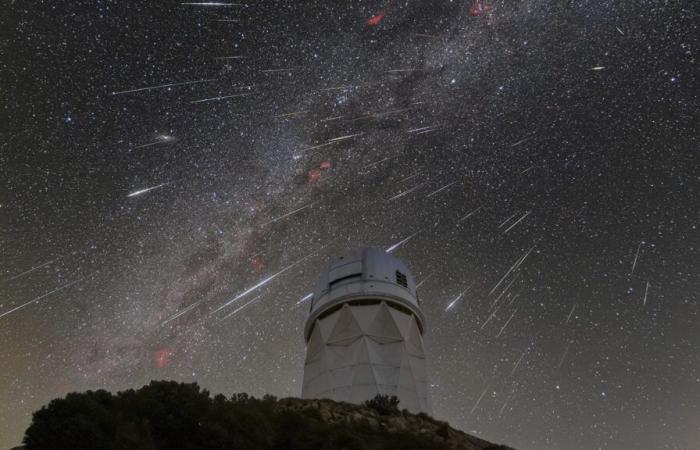Astronomers know that the universe is falling apart at an accelerating rate, and they have wondered for decades what could be speeding things up. They assume that a powerful and constant force is at work, a force that fits perfectly with the main mathematical model describing the behavior of the universe. But since they don’t see it and don’t know where it comes from, they call it dark energy.
This energy is so vast that it is thought to make up almost 70% of the universe, while ordinary matter, such as stars, planets and human beings, makes up only 5%.
But the results published at the beginning of the year by an international research collaboration bringing together more than 900 scientists from around the world were a big surprise. By analyzing how galaxies move, scientists have found that the force that pushes or pulls them does not appear to be constant. The same group released a new set of broader analyzes on Tuesday that provide a similar answer.
“I didn’t think such a result would happen in my lifetime,” said Mustapha Ishak-Boushaki, a cosmologist at the University of Texas at Dallas who is part of the collaboration.
Called the Dark Energy Spectroscopic Instrument, it uses a telescope in Tucson, Arizona, to create a three-dimensional map of the 11 billion year history of the universe, to see how galaxies have grouped together over time. time and across space. Scientists thus have information on the evolution of the universe and its possible direction.
The map they construct would not make sense if dark energy were a constant force, as is assumed. Rather, the energy seems to change or weaken over time. If this is indeed the case, it would upset astronomers’ standard cosmological model. This could mean that dark energy is very different from what scientists thought, or that there may be something entirely different going on.
“This is a time of great excitement, but also of perplexity and confusion,” said Bhuvnesh Jain, a cosmologist at the University of Pennsylvania who was not involved in the research.
SEE ALSO | Astrophysicist Nathalie Ouellette explains black hole discovery
The collaboration’s latest discovery highlights a possible explanation for an older theory: Over billions of years of cosmic history, the universe has expanded and galaxies have grouped together as predicted by relativity general of Einstein.
The new results are not definitive. Astronomers say they need more data to disprove a theory that seemed to fit so well. They hope that observations from other telescopes and further analyzes of new data over the next few years will help determine whether the current view of dark energy holds up or collapses.
“Robert Caldwell, a physicist at Dartmouth College who is not involved in the research, emphasized: “The importance of this result at this time is tantalizing, but it is not a gold-plated measurement.” .
The answer to this question is not trivial. Because dark energy is the most important component of the universe, its behavior determines the fate of the universe, says David Spergel, astrophysicist and president of the Simons Foundation. If dark energy is constant, the universe will continue to expand, becoming ever colder and emptier. If it gains power, the universe will expand so quickly that it will self-destruct in what astronomers call the Big Rip.
“Don’t panic. If this is what is happening, it will not happen for billions of years,” he said. “But we would like to know about it.”






